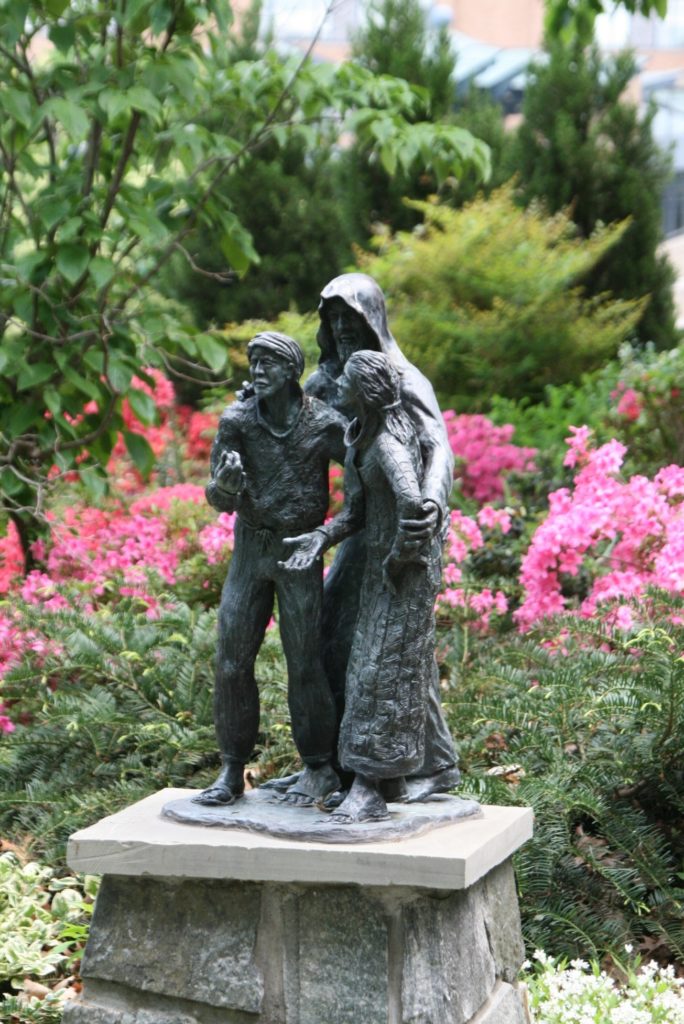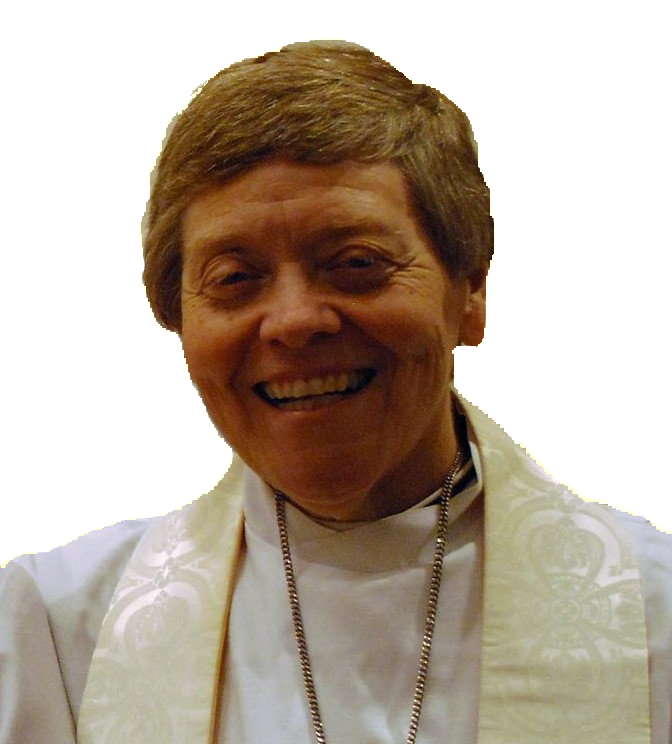Sermon 4/26/2020 “The tomb is empty”
Preacher: Jo J. Belser
Location: Church of the Resurrection “at home” in Alexandria, VA
Text: Luke 24:13-35
Day: 3Easter, Year A, during a pandemic
I read in a commentary about today’s gospel lesson that, “This passage definitively answers the question of whether other disciples than just the 12 had been with Jesus at the Last Supper.”
I was startled. I mean, I had never wondered—never even THOUGHT of wondering—if those in the Upper Room at Jesus’ last Passover meal had included OTHERS than just the 12. But, as this line of reasoning goes, if Cleopas and his companion HADN’T been at the Last Supper, how would they have recognized Jesus as he broke the bread with them at their dinner table?

If we continue this line of reasoning just a little further, we finally reach the question I ask of today’s gospel lesson: “If these two disciples were so ‘inner core’ they had been with Jesus at his Last Supper, why were they headed home to Emmaus if they knew THE TOMB WAS EMPTY? Shouldn’t they have waited a bit longer before abandoning their “group,” as Cleopas called those who had followed Jesus?
Maybe—just maybe—had Cleopas and his companion gotten up early on this first Easter morning and headed home, maybe we could understand their actions. But the women “of their group” Cleopas said, had “astounded” Jesus’ disciples with their report that Jesus was alive. And others “who were with us,” Cleopas said, had confirmed the tomb was empty. The tomb was empty and these two had headed for home!
This is how we know some of Jesus’ followers were there only because of their faith in the group’s leader, and only then until that leader disappointed them.
Just how did Jesus disappoint Cleo and his friend? Jesus disappointed those who loved him, disappointed those who had placed their hope in him, by dying. And so, disappointed, hopes dashed, disbelieving, they headed for home.
We see this type of behavior sometimes in churches. The rector leaves, as rectors invariably do, and the people who are there evaluate their loyalty to the church community that remains. They each ask themselves if their ties to each other are strong enough to weather the transition period.
Jesus’ disciples, at least two of them, decided to go home. This is how we know that not all who had followed Jesus were committed enough to each other to wait together, to stay together, long enough to act on this report that the tomb was empty.
Jesus did what Jesus always does: He came alongside these two disciples whose faith in him had waned. Then Jesus had waited patiently for them to recognize his living presence in their lives. What was required to make this recognition was the meal he shared with them.
A theologian named Gregory Dix noticed the Eucharist we share each week uses these exact four actions:
- Jesus took the bread, as I do each week when I receive it from the people who present the bread (and the wine) on behalf of the whole community.
- Jesus blessed the bread, as we do in the Liturgy of the Table, using one of the seven or more versions of the Eucharist prayer of the Great Thanksgiving.
- Jesus broke the bread, as I do in what we call “The Fraction.” The priest says, “Alleluia, Christ our Passover is sacrificed for us.” And the people respond, <pause> that’s right, “Therefore let us keep the feast. Alleluia.”
- Jesus then gave the bread to these disciples, as we each receive the Bread around the altar.
Here Jesus defined for the community who remained that he was and forever would be the vehicle, the mechanism, the means by which his disciples would remain together.
These two disciples rushed back to the community of Jesus-followers—all 7 miles to Jerusalem—and told what they had experienced. Ever since, we Christ-followers have been experiencing Jesus in our midst, at the center of our life together.
Today I wonder what might cause YOU to abandon this, your community, and return home? Is there something I might do, or fail to do, that would cause you to say, “I think I’ll stay home?” Or would you just double-down on community and “outwait” me?
I don’t think I have such power—or should have such power. Christ Jesus is at the center of our corporate life, our community life, our church-family life.
Or maybe there might be something about the WAY we break the bread here, or WHERE we break the bread, that would be a Church of the Resurrection deal-breaker for you. Would it be not being able to see each other as we worship together? Or not hearing an organ play the music, or not having a choir of voices, or a choir of a certain size?
Or maybe NOT breaking bread—not having the Eucharist, as we are experiencing now in this global pandemic—maybe THIS would cause you to abandon your church community. “Ho hum,” you might say, “the tomb is empty and people report having experienced the risen Christ here, but I think I’ll just go home. Forever!”
Surely not. I know you too well, Church of the Resurrection, I know how highly you value this community. So highly you support the work God gives us to do in our city’s West End with your presence (no matter where or how or even “when” we “gather”), with your prayers (in Christ’s name), and with your resources (to serve others in need). Call me intuitive, but I’m guessing you have experienced the risen Christ here.
Don’t get used to this stay-at-home worship, as necessary as our staying home is right now. Our effectiveness as Christ’s disciples lies in being in community. But don’t expect our community life will ever return to what we experienced pre-pandemic. I’m sorry to be the one to break this news to you. But stay awhile and see what happens next: the tomb is still empty!

